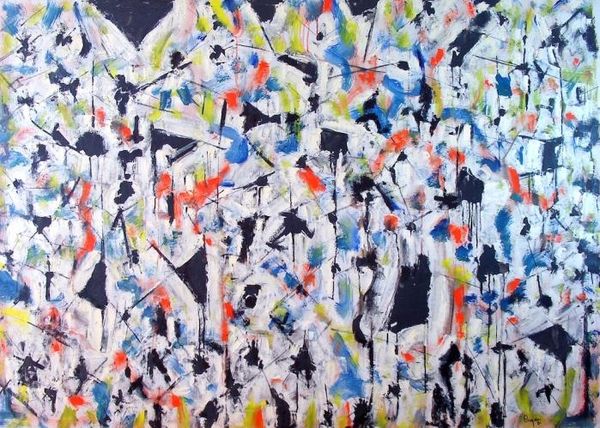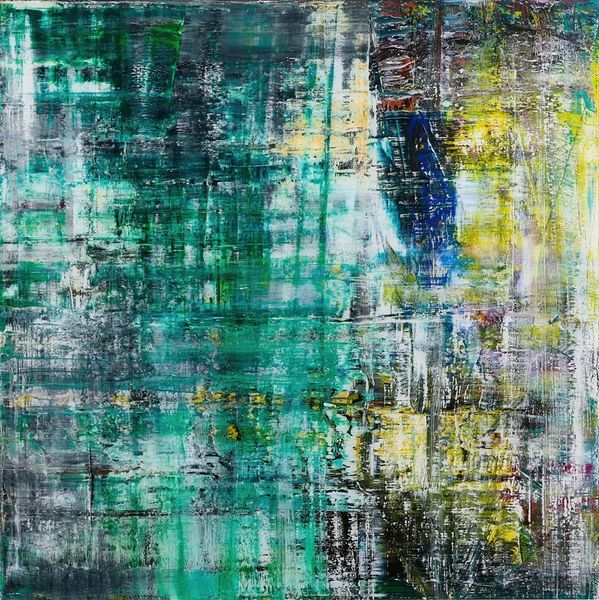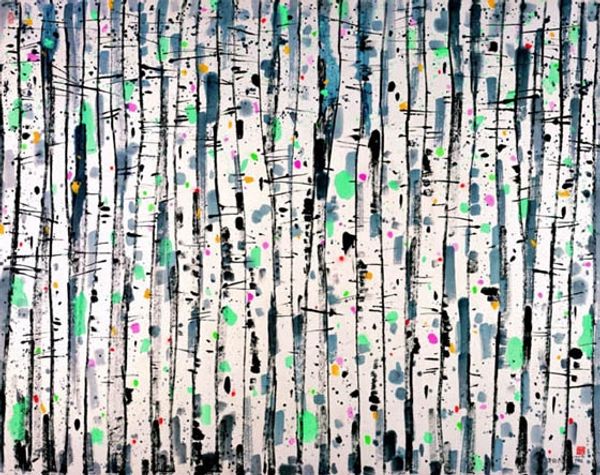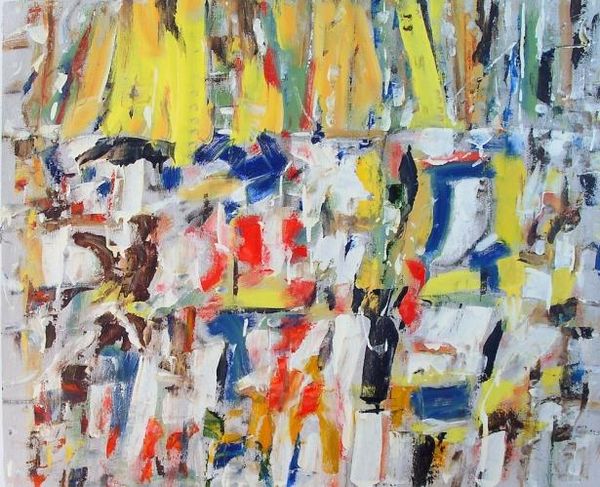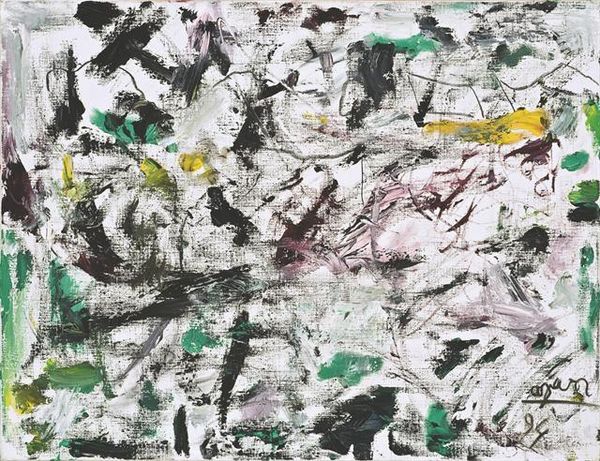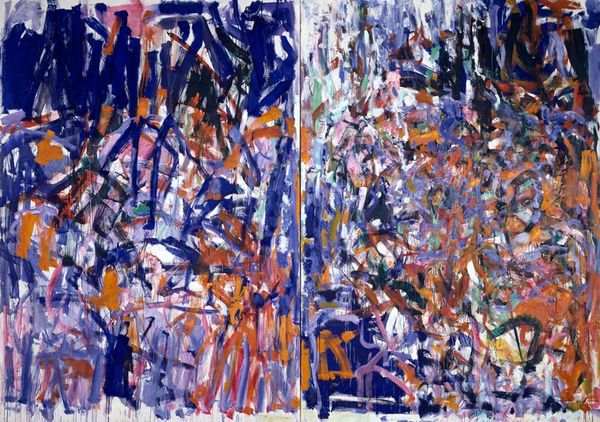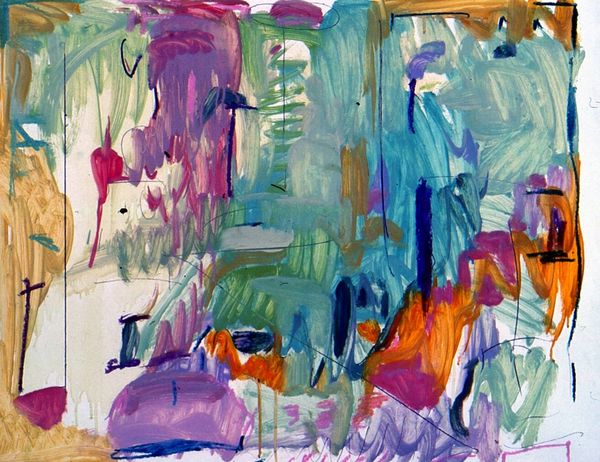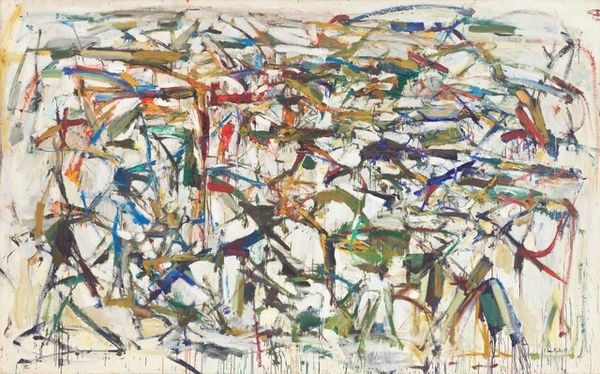
mixed-media, acrylic-paint
#
abstract-expressionism
#
abstract expressionism
#
mixed-media
#
cobra
#
pattern
#
landscape
#
acrylic-paint
#
abstraction
#
abstract art
#
modernism
Copyright: Pierre Alechinsky,Fair Use
Curator: Gazing upon Pierre Alechinsky's 1951 piece, "Les hautes herbes," one encounters a canvas pulsating with abstract forms, rendered in mixed media. What impressions strike you initially? Editor: A delightful visual buzz! It feels like peering into a sun-drenched meadow, but translated through a Cubist's dream. The way the light plays...it's almost overwhelming, yet undeniably playful. I sense the chaotic beauty of nature. Curator: Indeed, the dynamism is key. Note how Alechinsky, associated with the Cobra movement, employs an intuitive, almost impulsive, approach. The high grass motif isn't just representational. It is also symbolic, reflecting a broader theme within Cobra—the desire to liberate art from formal constraints, to tap into primal expression. The tall grass could be the uncultivated part of ourselves. Editor: That’s so interesting! There is a primal rawness but I would have guessed music rather than wild nature – maybe a really intense, improvisational jazz piece…the colours even have their own sounds: muted yellows, the sharper greens...Does that fit with that symbolic liberation? Curator: Absolutely. The intuitive, stream-of-consciousness style embraced by Cobra aimed to break free from post-war intellectual stagnation and tap into something raw and instinctive. And music and rhythm become a perfect symbolic language for that effort to escape control. Notice the repetition of vertical lines – the grass itself. In various traditions, verticality symbolizes aspiration, growth. Alechinsky’s densely packed composition presents an abundance of such striving, but also an impediment; like struggling through that high grass to get somewhere. Editor: Yes, I definitely feel a sense of movement. It's a constant interplay between feeling contained and being impelled forward – that adds another layer of richness to this chaotic, buzzing image. There's an anxiety there, or a constant reaching…but somehow still fun. So interesting. Curator: The joy and struggle existing simultaneously – a reflection perhaps, of the post-war artistic psyche searching for renewal in unconventional forms, while wrestling with the implications of that freedom. A meadow is hardly an innocent field in those years. Editor: It feels remarkably present even now! Well, that image has certainly ignited a spark. It's liberating to explore how layers of emotion, memory, and perhaps struggle can be compressed into seemingly chaotic expression and take on their own complex voice. Curator: It does remain remarkably lively, a landscape not just observed, but deeply felt. And as you noted it does allow us to see what resonates from these cultural explorations, from all these complex histories, even now.
Comments
No comments
Be the first to comment and join the conversation on the ultimate creative platform.
